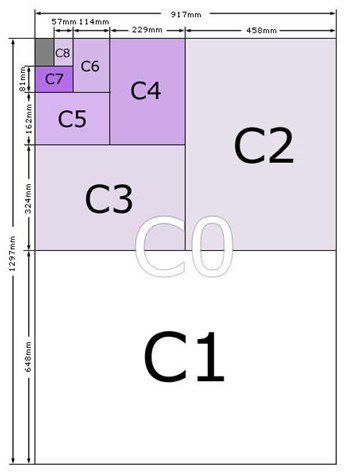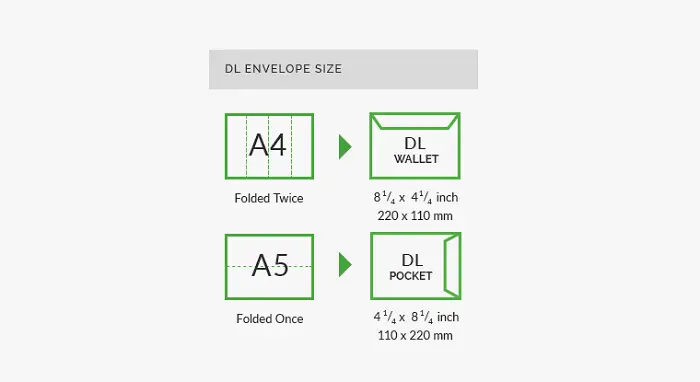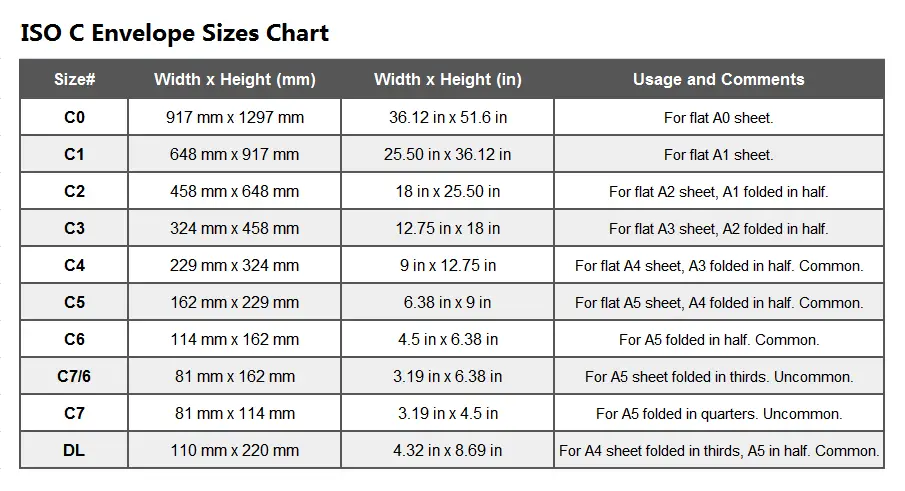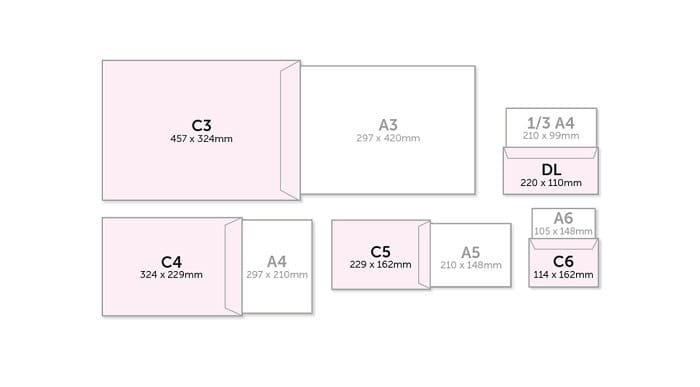Have you ever listen about C Series and DL Business Envelope Sizes? We all write letters to express our thoughts, share with our beloved near and dear ones, and to express gratitude or pain. Since the past messages have been a very efficient way of communication. Businesses officials also have to send various kinds of business documents through the post. Courts also furnish and sanction orders on legalized papers called legal papers and then send it to the person concerned through the post.
Also, various kinds of documents has exchanged amongst two countries and other individuals. But all these tasks share one common thing. The use of the primary material within which we can enclose the letter or document and send it so that it stays confidential until it reaches the target person – an envelope.
Envelopes have been used for centuries to enclose letters and other documents, and they have proved to be useful for the ease of transportation, maintaining of confidentiality, and prevention from threats to security. Envelopes are so helpful that we use them everywhere and for all purpose of sending documents. So, when paper sizes has standardized, it was important that Envelope Sizes too should have standardized. For this, we created the Standard C Series Envelope Sizes. US & North American Envelope Sizes are not covered by ISO 216, that’w why we’ve mentioned them on this page.
The article determines you are accompanying the capacity of each wrapper when distinguished to a sheet of A4 paper. Also, different ranges of US & North American Envelope Sizes, as not contained under ISO 216, contain the three main types of wrapper profitable, notice, and name. Other lower widely secondhand wrapper styles include Booklet, Baronial, and Square.
[table id=79 /]See Also: Dimensions US & North American Envelope Sizes
Table of Contents
ISO 216 Standard for C Envelope Sizes
The dimensions of Paper Sizes in C Series Envelope Sizes have very precisely defined in the ISO 216. All paper and envelope sizes included in the ISO 216 follow a basic rule that they should have an aspect ratio of √2:1. This helps to make these papers easily resizable. The ISO 216 was formed based on the old German DIN 476 Standard which further references a letter by a scientist describing the specialties of the √2:1 aspect ratio. They are as follows:
- When we fold such a paper or cut precisely into two halves parallel to the two shorter sides, then the two newly created documents also have an aspect ratio of √2:1.
- When we attach such a paper with another article of the same dimensions along one of the larger sides, the newly formed more prominent paper also has an aspect ratio of √2:1.
These properties help in easy resizing of all the ISO 216 Paper Sizes. The ISO 216 Standard for C Series Envelope Sizes is formed of a few other rules. This also includes standard property.
Rules for C Series Envelope Sizes
- Every size should have an aspect ratio of √2:1 in the C Series Envelope Sizes (to help with easy resizing). Thus, an A4 Size Paper when folded parallel to its shorter sides easily fits in a C5 Envelope and when wrapped again along the shorter sides will fit comfortably in a C6 Envelope because of the maintaining of aspect ratio √2:1.
- Any Size C(n) is defined as the geometric mean of the A(n) and B(n) Sizes.
i.e. length of C(n) size = √ (length of A(n) size) × √ (length of B(n) size) and same for the breadth.
This makes the size C(n) an almost exact fit envelope for holding the unfolded sheet of paper of size A(n).
- As the aspect ratio is an irrational number; the dimensions generally exceed the standard conventions and precision is hard to achieve. For this reason, the sizes are always rounded off to the nearest millimeter.
C Envelope Size Tolerances
ISO has also stated the maximum errors or tolerances that each size can have during production. This is because the output is an error-prone process and mechanical and human errors can always be created. In ISO 216, avoidance particularized for the C envelope sizes are the same for A & B order paper sizes and are in this manner:
- ± 1.5 mm (0.06 in) for lengths and breadths below 150 mm (5.9 in)
- ± 2 mm (0.08 in) for lengths and breadths between 150 mm and 600 mm (5.9 in and 23.6 in)
- ± 3 mm (0.12 in) for lengths and breadths above 600 mm (23.6 in)
C Envelope Sizes
The Dimensions of the Envelope Sizes stated in the ISO 216 range from maximum dimensions of 1297 mm × 917 mm (51.5 in × 36.1 in) of the C0 Size to minimum dimensions of 40 mm × 28 mm (1.6 in × 1.1 in) of the C10 Size. The C4 Envelope Size can easily fit unfolded A4 Paper; while the C5 Envelope Size can comfortably fit an A4 Paper folded into half along its shorter sides once; the C6 Envelope Size can comfortably fit an A4 Paper folded into half twice.

Hence, these C Sizes sometimes referred to as A4 Envelope Size, A5 Envelope Size and A6 Envelope Size. The Sizes of C Series Envelopes can obtain in cm and feet by dividing the millimeter sizes by 10 and the inch sizes by 12 respectively.

C4 Envelope

C5 Envelope

C6 Envelope
Dimensions of C Envelope Sizes
As defined by ISO 216, the boundaries of the C envelope sizes are given in the table beneath in millimeters and inches ( separating the mm worth by 10 may achieve cm measures).
The table beneath shows the breadth of each of the wrappers when distinguished to a distance of A4 paper. The content of US & North American Envelopes is not below ISO 216.
By dividing by 10, you can convert mm numbers to centimeters to get sizes. Then by multiplying the inch measurements by 12.
Select the envelope size from the ‘Size‘ field and the unit from the ‘Unit‘ field. This will display the dimensions automatically in the ‘Dimensions‘ box.
DL Envelope Size – Business Envelope Extension
For business envelope we use the DL Business Envelope Size the most. But it doesn’t meet the √2:1 aspect ratio requirements and hence couldn’t include in the C Series Envelope Sizes. But still, we use the DL Business Envelope Size as it can hold most paper sizes and fit them comfortably. Hence, ISO 216 Standards for Envelope Sizes even includes it due to its wide range and worldwide usage.
The dimensions of the DL Business Envelope Size are 110 mm × 220 mm (4.33 in × 8.67 in). We sometimes consider it small for reliable enveloping, but still, we use it the most.

The DL Business Envelope Size easily holds an A4 Sheet of Paper when folded parallel to its shorter sides into three equal sections.
[table id=80 /]
B4 and B6 Envelope Sizes are provided below:
[table id=81 /]C5+, C5++, C7/ C6 and A3 Envelope Sizes:
[table id=82 /]See Also: Envelope Sizes – DL, C0, C1, C2, C3, C4, C5, C6, C7, C8, C9, C10
FAQ
What are C envelope sizes?
The facet ratio of C-order wrappers is 1:√2. Which means that an A4 page of the paper, when encased in half near the side of allure tinier edges, will fit carefully into a C5 envelope.
Which are more considerable, C4 or C5 wrappers?
An A4 page can be held folded in a C4, which is 324 x 229mm (12 34
What is the distinctness middle from two points, B Series and C Series wrappers?
B order wrappers are suitable when the best quantities of A4 paper, huge articles, or best sheets neatly fit into C succession wrappers. Of course, tinier C order wrappers may be secondhand for failed A succession paper. DL wrappers are devised to hold an A4 page of paper folded double to DL intensity.
What diameter is the C6 wrapper in inches?
A C6 wrapper measures 114 × 162 mm or 4.5 × 6.4 inches. A C6 wrapper will fit an A6 piece of paper.
See Also: B Paper Sizes – B0, B1, B2, B3, B4, B5, B6, B7, B8, B9, B10





